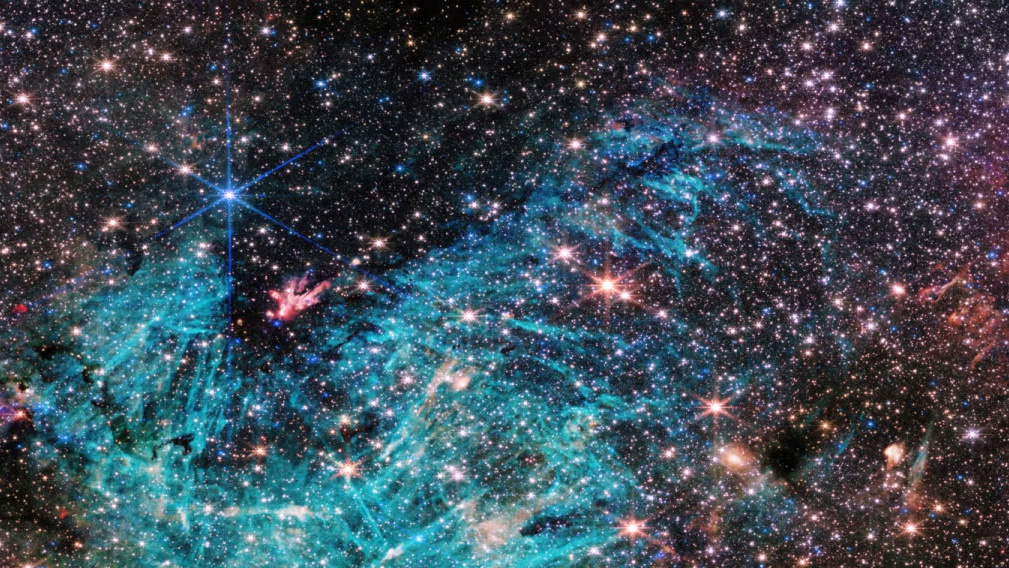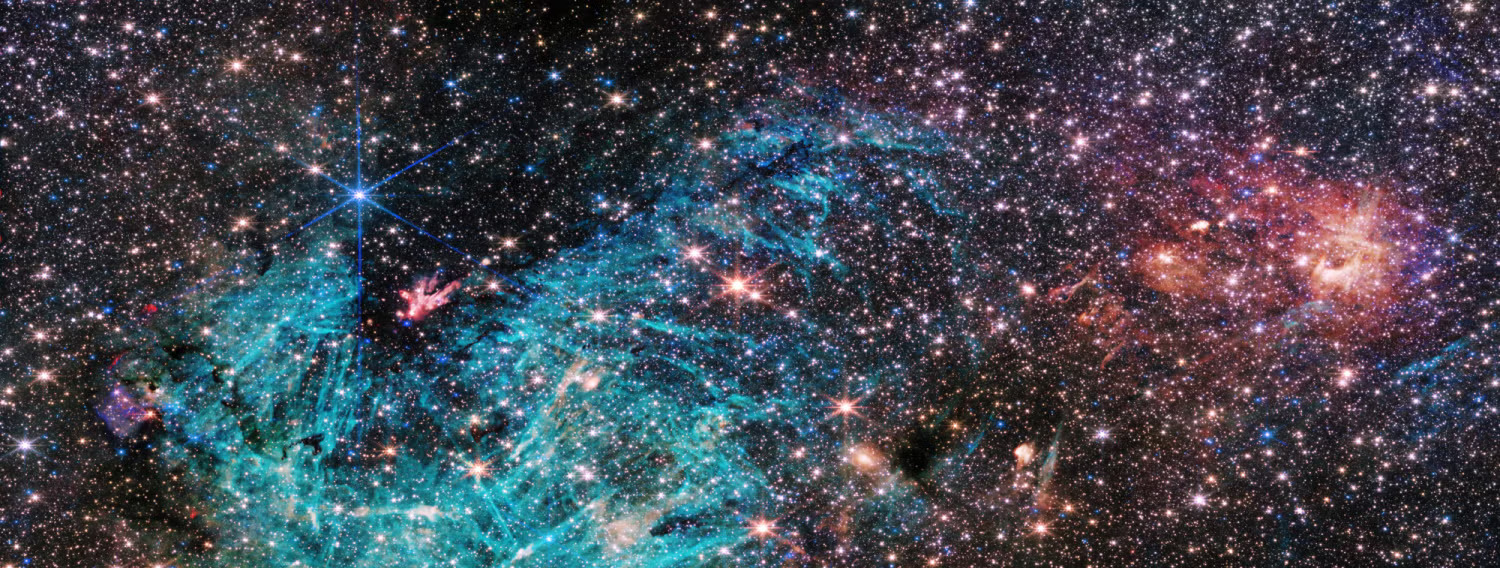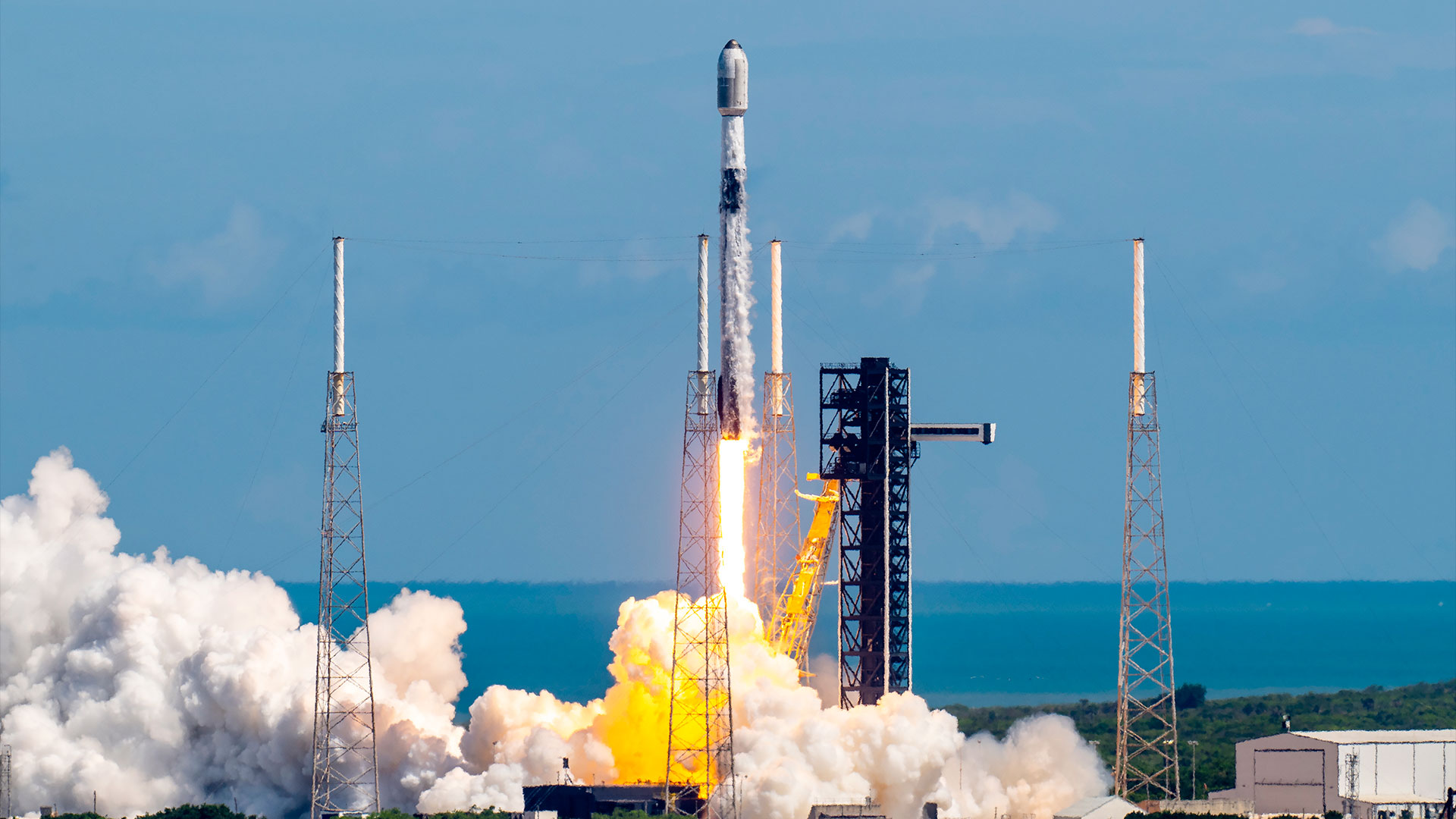Extreme magnetic fields near our galaxy's black hole are preventing stars from being born, JWST discovers
"It was a completely serendipitous discovery."

Stars are the architects of nearly all the chemical elements in the universe, including ones crucial to life as we know it, such as carbon and oxygen. Yet, despite decades of research, aspects of star formation are as mysterious as the dense, dark clouds of gas in which baby stars are embedded. The James Webb Space Telescope's observations of Sagittarius C (Sgr C), a star-forming region at the Milky Way's heart that appears to form fewer stars than expected, are shedding new light on some of these enigmatic processes.
Despite residing in one of the galaxy's most extreme star-forming environments — just 200 light-years from the supermassive black hole Sagittarius A* — and containing vast reserves of molecular gas, Sgr C doesn't birth as many stars as astronomers estimate it should. In 2023, the James Webb Space Telescope (JWST) provided astronomers with the first infrared data of this stellar nursery, enabling them to peer through the obscuring blanket of gas and dust and study its young stellar population in greater detail.
A fresh analysis of those observations has now revealed dozens of bright, needle-like filaments of hot plasma, some several light-years long, weaving in and out of the Sgr C nursery.
"We were definitely not expecting those filaments," Rubén Fedriani, a postdoctoral researcher at the Instituto de Astrofísica de Andalucía in Spain, who co-authored two new studies reporting JWST observations, said in a statement. "It was a completely serendipitous discovery."
Fedriani and his colleagues suspect these newly detected filaments are sculpted by nearby magnetic fields, which themselves are stretched and amplified by turbulent motions of gas swirling around the behemoth black hole at the center of our galaxy, Sagittarius A*. This black hole has a mass of around four million times that of our sun and exerts supreme tidal forces on its surroundings.

These magnetic forces may be strong enough to counteract the typical gravitational star-forming collapse of molecular clouds, instead confining material into dense filaments seen in the JWST images, which helps explain why Sgr C is forming fewer stars than expected, according to the two new papers.
"For the first time, we are seeing directly that strong magnetic fields may play an important role in suppressing star formation, even at small scales," astrophysicist John Bally of the University of Colorado Boulder, who led one of the two new papers describing the JWST observations, said in another statement.
Breaking space news, the latest updates on rocket launches, skywatching events and more!
"This is an exciting area for future research, as the influence of strong magnetic fields, in the center of our galaxy or other galaxies, on stellar ecology has not been fully considered," Samuel Crowe of the University of Virginia, who led the second new paper, added in the same statement.
Bally and his team used JWST data to also infer that two massive young stars near the center of the Sgr C nursery are sandwiched between pairs of parallel, ropelike filaments, which likely trace the walls of cavities created by powerful stellar winds.
Owing to the extreme environment it resides in, observations show Sgr C has expelled much of its star-forming material, suggesting the nursery could vanish in just a few hundred thousand years — a blink of an eye in the context of the universe's 13.7 billion-year history.
"It's almost the end of the story," Bally said in the statement.
These findings are described in two papers published Wednesday (April 2) in the Astrophysical Journal.
Join our Space Forums to keep talking space on the latest missions, night sky and more! And if you have a news tip, correction or comment, let us know at: community@space.com.

Sharmila Kuthunur is a Seattle-based science journalist focusing on astronomy and space exploration. Her work has also appeared in Scientific American, Astronomy and Live Science, among other publications. She has earned a master's degree in journalism from Northeastern University in Boston. Follow her on BlueSky @skuthunur.bsky.social
You must confirm your public display name before commenting
Please logout and then login again, you will then be prompted to enter your display name.
